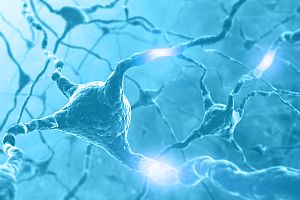The Right Diet Path to Health: Research Shows a 40% Decrease in Stroke Even after a 4-Year Follow-Up
 Many people have heard of the possible health benefits of the Mediterranean diet. But are these legitimate claims?
Many people have heard of the possible health benefits of the Mediterranean diet. But are these legitimate claims?
Why should you actively try to eat a certain way when you might be following an unfounded fad diet which becomes time-consuming, expensive and more difficult than what you do already?
What has been discovered recently is that although the health benefits of the Mediterranean diet have been boasted by anecdotal evidence and health gurus for years, it has now proven itself through science.
What this means for you is that you can use this large scale study to ensure that you and your loved ones eat well so you live long, healthy, happy and productive lives.
While a couple extra pounds will likely bum you out, what’s worse is it can start impacting the quality of your life from the inside out. Just a few extra pounds can create a greater degree of injury to your joints, and bad diet choices can slowly create physical exhaustion and dysfunction within your body.
In our office, we ease the body pain from joint stress. One way to help yourself feel good is to maintain a healthy weight. Also read the facts below to learn more about how to get your diet right for the health of your heart and blood vessels.
Researchers from the University of Barcelona performed a large-scale 5-year study that found those who follow a Mediterranean diet can reduce their risk of death from the effects of cardiovascular disease, such as heart attack and stroke, by 30 percent.
The study, published in the New England Journal of Medicine, followed 7,447 people who had been selected to participate due to significant cardiovascular risk factors, including high blood pressure, diabetes, smoking, high cholesterol, a family history of heart disease and being overweight.
The aim of the study was primarily to determine the effect of diet choice on health by considering and counting the number of heart attacks, strokes and deaths from any cause while it was conducted. These efforts were primarily to come to a conclusion about how effective the Mediterranean diet is in reducing catastrophic health events, and thereby increase longevity.
The participants of the health research study were randomly assigned to one of three groups:
- A standard Mediterranean diet, supplemented with at least 4 tablespoons of olive oil per day
- A standard Mediterranean diet supplemented with about an ounce per day of nuts (walnuts, almonds and hazelnuts)
- A low-fat diet group
Participants in the Mediterranean diet group consumed:
- Two servings of vegetables and three servings of fruit daily
- They were to add fish and legumes to the menu at least three times a week.
- They were asked to substitute white meat for red and to limit processed meats and dairy products.
- If the participants drank alcohol, they were advised to drink a minimum of seven glasses of wine per week with their meals.
- Participants were also asked to reduce the amount of commercially baked goods they consumed to no more than three times a week.
Participants in the low-fat diet group were to avoid eating nuts and any type of vegetable oil (olive oil included), cut off visible fat from meat and limit store-bought desserts to less than once a week. They were asked to eat three or fewer servings daily of a simple carbohydrate such as bread, potatoes, pasta or rice, and consume three servings of low-fat dairy products, as well as fruits and vegetables.
No calorie limits were placed on any of the groups, nor were they encouraged to increase their level of physical activity. Those in the low-fat group had the most difficult time adhering to the dietary guidelines and most participants reverted to a standard Western diet, with a slightly lower fat intake.
Those assigned to the Mediterranean diets were found to be not only 30% less likely to have suffered a stroke, heart attack, or died during the study, they were also 40% less likely to have suffered a stroke in the study’s 4-year follow-up period than those who were assigned the low-fat diet.
Not only have low-fat diets been shown to not be of much benefit, but they are known to be difficult to maintain because they leave people feeling unsatisfied.
How to incorporate the Mediterranean diet when you’re choosing foods on the go:
“Cheeseburgers and fries are fast food staples, and frankly don’t fit a Mediterranean diet plan,” says Donna Feldman, MS, RD and contributor to www.theDietChannel.com. Here are a few food selection tips to stick to a mostly Mediterranean diet when you’re on the go:
- Avoid items with cheese or mayonnaise spreads
- Avoid fried potatoes and breaded, fried meats
- Choose meal-sized salads with chicken or turkey meat on top. Subtract the croutons and add more protein or salad if you’re still hungry
- Choose the simplest meat dishes (grilled chicken minus the buns or sauces)
- Avoid processed and breaded meats such as chicken nuggets, if you have the option
- Avoid side fillers like soda pop, desserts and chips – instead choose water, vegetables or fruit
- An ideal pizza would be thin crust, with feta cheese, fresh tomatoes, fresh spinach and perhaps olives, mushrooms and peppers
- When in doubt, opt for salads with olive-oil dressing and some meat or fish, plus a whole grain roll once in a while is safe
You’ll be surprised how satisfied you can get from eating a meal minus much of the sugar, processed meats and bread.
Healthy is created from the choices of what you put into your body as well as how well you treat and take care of your body on the outside. If it seems confusing to keep up with what dietary information to follow during the day, imagine how hard it is to look out for the everyday symptoms that indicate that the body is getting worn down. At our office, we help our clients keep pain away, heal injuries quickly and make sure their bodies keep moving like a well-oiled machine. Ask us about our complimentary body balance evaluation.
Becoming Strong and Lean: Are You Meeting the Official Fitness Standards? Tips on How You Can
 Physical fitness is a way of life — and it has been for centuries. Even so, most people don’t know what fitness goals to strive for so many find themselves wasting their energy and not seeing healthy results.
Physical fitness is a way of life — and it has been for centuries. Even so, most people don’t know what fitness goals to strive for so many find themselves wasting their energy and not seeing healthy results.
What you might not realize, however, is that there is an actual set of physical fitness standards for adults in the U.S. While you won’t be fined for not meeting them, they are recommendations that help keep you healthy and living life to your fullest.
It is important for adults to achieve optimum physical fitness; it not only helps them lose weight, but prevents them from suffering from injuries in the future.
The President’s Council has an Adult Fitness Test that lets you compare your own fitness scores with other adults in the United States. It helps determine your level of physical fitness and helps you figure out where to improve. You can find the test on the AdultFitnessTest.org site.
If you plan to take the test, here are the few things you will be evaluated on:
- Your Level of Aerobic Fitness —You should be able to perform moderate aerobic exercise for a minimum of 30 minutes and at least five days per week. You should also be able to handle vigorous exercise three to four days per week for a minimum of 20 to 30 minutes. Just having this level of physical fitness will help your body burn more calories.
- Strength and Endurance — Your body needs at least three days per week of strength and endurance training. That means including three sets of 25 sit-ups and 10 to 20 push-ups. Strength training helps tone and improve the look of your body, but it also helps you burn more calories and strengthen the muscles and tendons supporting your body.
- Your Flexibility— Your body needs flexibility. You should be able to perform static stretches and hold them for up to 30 seconds. Stretching helps prevent injury, balances your muscles and can even reduce joint pain.
- Body Mass Index —Your body mass index, also referred to as your BMI, measures your body’s fat in comparison to your height and weight. For most people, a proper BMI is between 18.5 and 24.9 — depending on height. While it doesn’t address all factors, a BMI could determine overall how healthy you are.
It is important to raise awareness about your health and how activities can affect your health. Exercises are only effective if they are done regularly as part of your routine. By measuring your performance and working up to particular benchmarks (like those listed above), you can put yourself on the right track for meeting the official fitness requirements for adults.
Before Engaging in Physical Activity
Before you start any type of workout or fitness program, you should consult a professional. You can have your body assessed for any injury prone areas and make sure you’re physically fit to take on any exercise. Schedule an appointment with Dr. Nicole Muschett (Bethlehem, PA) to receive a physical assessment. If you want to lose weight without injuring your body, you should be assessed by a skilled and fitness-trained Chiropractor.
How to Stay Flexible and Combat Hereditary Arthritis
 The genetic makeup of some individuals makes them more apt to get particular types of arthritis than others — making it clear that genes do play a role in who gets arthritis and who does not. There are more than 200 different types of arthritis, and the bulk of them are not what medical researchers and clinicians would call “hereditary” conditions.
The genetic makeup of some individuals makes them more apt to get particular types of arthritis than others — making it clear that genes do play a role in who gets arthritis and who does not. There are more than 200 different types of arthritis, and the bulk of them are not what medical researchers and clinicians would call “hereditary” conditions.
A genetic predisposition doesn’t necessarily mean everyone will get arthritis. In fact, there are plenty of people who have a genetic predisposition for it but never suffer from this debilitating ailment.
An Example of Genetic Arthritis
Rheumatoid arthritis, for example, is when joints are inflamed due to the body’s immune system attacking the lining of those joints. Genes in a person’s body such as the HA-DR4 and HLA-DRB1 can increase the likelihood a person will get this type of arthritis. In fact, a report from Harvard Medical states that this type of arthritis affects two percent of the population and is more common in women than men.
Osteoarthritis, one that affects the elderly, is also tied to genetics. While it is the result of daily wear and tear on the joints, it has been noted that those with a genetic predisposition or a family history of osteoarthritis are more likely to get it in the future.
Developing Arthritis
The severity of arthritic symptoms can be influenced by more than just genetics. In fact, hormones can increase or decrease the amount of paint associated with arthritis. Some women have reported less arthritis pain when they become pregnant, only for the symptoms to return once their pregnancy is over.
How to Stay Flexible and Prevent Arthritis
Even if you are genetically predisposed to arthritis, there are things you can do to combat the symptoms and remain flexible so you reduce the signs of or pain of the disorder. There are common predisposing factors that can lead to acquiring arthritis. With those in mind, here are some things you can do to combat arthritis:
Age
Just because you’re older doesn’t mean you should ignore your body. There are aches and pains associated with getting older, and most people lower their level of physical activity because of it. But, if you remain active, perform daily stretches and keep your body healthy, you could reduce the impact of arthritis on your body.
Injury
Take care of your body to avoid excess injuries. Stretch before working out, seek out regular chiropractic care, and wear proper fitting shoes for a start.
Stay Hydrated
Mild dehydration can lead to short-term memory loss, less endurance and increased fatigue. Mild to moderate dehydration can actually impair your performance and lower your psychomotor skills. Drink at least eight 8-ounce glasses of water per day.
Inactivity
Inactivity can actually make arthritic pain worse. According to the Center for Disease Control, physical activity may reduce pain, improve body function and mood, and even improve the quality of life of arthritis sufferers. Try to get at least two and a half hours of moderate exercise per week.
Being Overweight
When you are overweight (or obese), you put excess strain on your muscles and joints, which can actually increase arthritic pain.
Hope for Arthritis Sufferers
While there might not be a cure for arthritis once it’s present, there are things you can do to make the pain less noticeable and improve your quality of life. Visiting your chiropractor for a check up to see what type you have or if you have arthritis at all is the first step. Dr. Nicole Muschett, the movement specialist Chiropractor of Bethlehem, PA, invites you to her clinic for a pain assessment so that you can see what stretches and preventative treatments can be done to lessen the pain associated with arthritis.
The 5 Cardinal Rules to Keep Your Knees Functioning at Their Best and Out of Pain
 It’s not unusual to have aches and pains throughout your body as you age. But, there are ways to keep those minimal. By maintaining the health of your knees, you can avoid mobility issues in your older years — and prevent debilitating knee injuries. Sometimes old injuries that occur when you’re young can also come back to haunt you later in life. While you cannot change what happened in the past, there are some things you can do to keep your knees operating at their best.
It’s not unusual to have aches and pains throughout your body as you age. But, there are ways to keep those minimal. By maintaining the health of your knees, you can avoid mobility issues in your older years — and prevent debilitating knee injuries. Sometimes old injuries that occur when you’re young can also come back to haunt you later in life. While you cannot change what happened in the past, there are some things you can do to keep your knees operating at their best.
Rule #1: Always Wear the Right Shoes
Shoes can have a significant impact on the health of your knee. If your shoes force your feet to roll to the inside or outside, or if you suffer from fallen arches, you could put extra strain on your knees. Orthotic inserts can correct these types of issues — removing pressure from the knee. If you can, don’t wear high heels for too long at a time — they’re known to cause osteoarthritis in the knees.
Rule #2: Be Careful When You Exercise
Your body needs exercise, but exercising too much or overcompensating on the weekends because of inactivity during the week isn’t a good idea. Overloading your muscles, joints, ligaments, etc. can lead to micro-tears inside your knee. As time goes on, these small tears can become big problems.
To the new or returning athlete or gym-goer, work up to your workouts. Take it slow as you incrementally increase time and intensity to your workouts so you don’t injure your knees.
For avid athletes who are really engaged in one or just a few sports, it’s not uncommon for me to see the same injuries over and over. This is not just because of overuse due to the sport, but often because you are mainly working out in one plane, sagittal, or going forward. Your muscles are often over strengthening in the sagittal plan when you could keep knee pain away if you started to strength train in other planes. If you are a runner or cyclist, you can keep painful knee and leg conditions down by adding more side to side strength training.
Rule #3: Monitor Your Weight
When you are overweight, the extra pounds cause strain on your knee joints. Avoid activities that put extra pressure on the knees —such as running — while you are overweight. Instead, take up activities that help you lose weight, such as cycling or swimming, but don’t overwork the knee. For more check this out.
Rule #4: Work On Flexibility and Strength Training
Not exercising enough or with the right body balance is often a big problem with the knees. A tight muscle doesn’t mean it’s a strong muscle. A loose muscle doesn’t mean it won’t be a problem.
The muscles around your knee have to maintain an optimal length so they can pull at their strongest. When a muscle is overstretched (usually due to imbalance in the body), it has to do a lot more pulling to get to its totally contracted point. When a muscle is too tight and constantly contracting, it’s starting from a weak point because it can only contract so much more; it has a length that doesn’t change, but the amount of constantly contracting fibers can change.
Balance in the body is what helps your knees stay pain free and the muscles stay healthy and strong. Stretching before you exercise — especially in the hamstring, quads, hip flexor and oblique areas—can help support your knees. Even if you aren’t working out, you should stretch these areas daily. Women are more prone to stress on their knees; therefore, having a daily routine of stretching could be good for your body.
Stretching always helps, but doesn’t always take care of why there is an imbalance. Chiropractic adjustments helps take care of the structure under the muscles (your boney body frame) as well as helps preserve the healthy nerve conduction into and out of the spine which makes you feel all over good and your muscle contract their strongest. Adjustments are often exactly what the muscles need to stop getting pulled or having to work too hard to do the pulling.
Rule #5: Seek Out Regular Chiropractic Adjustments
When your spine is misaligned, it can cause extra strain on your knees. Regular chiropractic appointments have been shown to improve strength in the sacroiliac joints. Also, regular adjustments can take the strain off your knees and increase your overall range of motion.
If you want to keep your knees healthy, schedule an appointment with Dr. Nicole Muschett, (your Bethlehem, PA Chiropractor) today for a no obligation consultation. Or get access, today, to our free report, “10 Questions to Determine if you are Heading Towards a Foot, Ankle or Knee Injury and How to Prevent it”.
How to Move at Your Best: Understanding How the Nerves in Your Body Work…so You Prevent Injury
 You are in touch with your body, but do you know how the nerves in your body actually work? These circuits run throughout your body — and when one becomes pinched or compressed, they can cause tremendous pain.
You are in touch with your body, but do you know how the nerves in your body actually work? These circuits run throughout your body — and when one becomes pinched or compressed, they can cause tremendous pain.
Neural pathways can become a chronic source for pain in some people. If you have been suffering from chronic pain because of a pinched or compressed nerve, there is hope. But, first you must understand how your nerves work.
What Makes Your Body React Quickly and Prevent Injury…
Nerve impulses are electrical signals sent by your brain that travel along the nerve channels throughout your body. The signals help your body’s cells communicate with muscles, tendons and other portions of your body. Your nerves are what make you feel pain, temperature differences, see what is around you, hear, and even move.
Inside your nerves are specialized types of cells, known as neurons that carry the signals. Inside your neurons are somas, which are about 4 to 100 micrometers in diameter. From these come the dendrites — tiny tendrils that span out from the soma. Dendrites receive the signals sent from other neurons in the body. From each soma, there is an axon — a long channel that sends out the signals to other neurons.
Neurons and their signals are super fast. In fact, one signal can pass from the brain to your feet within 20 to 200 milliseconds — as long as your body is operating right. This is what makes your body react quickly in situations such as jumping to avoid something or reaching out to brace yourself for a fall.
As nerve impulses move along channels in your body, their charges change and they develop electrical energy, which is measured in millivolts. Positive and negative charges of the neurons are what create the neuron signal. When the cell membrane outside of the soma is stimulated by these charges, it opens the chemical gateways in the body — allowing positive ions to enter the axon.
What Happens When Nerves Are Damaged or Pinched
If you suffer a physical injury and it damages your body’s nerve channels, you could feel extreme pain, muscle tension and radiating nerve pain out to other areas of your body. The same can occur with drug interferences, but instead of pain, your body will be numb because the toxins or chemicals are interrupting nerve channels. Toxins, like snake venom or local anesthetics, can actually stop nerve signals from being sent across the channels — preventing you from feeling pain or controlling your muscles.
Without nerve impulses, no one would survive. These essential parts of your body’s wiring are what help you recognize the world around you, react and protect your body. Neurons and nerve transmissions are an essential part of your body’s function — and they can let you know when something goes wrong.
Getting Help for Nerve Pain from a Bethlehem, PA Chiropractor
When a nerve becomes compressed, you can suffer from extreme pain and discomfort. Some patients suffer from limited mobility, and the pain can be so debilitating they cannot do daily tasks.
If you’re suffering from nerve pain or nerve conditions, Dr. Nicole Muschett, your Bethlehem, Pennsylvania Chiropractor, can help you uncover what you need. Meet with her for a no obligation nerve pain consultation and see what treatment options are available for your condition.
Follow Us!